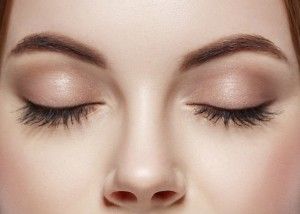
Definition
The skin is composed of two layers. The top layer is the epidermis beneath which lies the dermis. The dermis has two distinct layers called the papillary and thereticular dermis. The two outer layers of skin (epidermis and papillary dermis) may be rejuvenated without permanent scarring using chemical peel procedures. Chemical peel procedures use a chemical solution to remove damaged outer layers of the skin. The skin appears fresher and rejuvenated after the chemical peel procedure.
Could I benefit from a Peeling?
Chemical peels are often the treatment of choice for patients who have fine lines, pigment changes in the skin such as blemishes and other minor irregularities. They can also be used to treat scars such as acne scars and certain superficial skin cancers. In addition often surgical procedures alone may not be sufficient to obtain optimal aesthetic facial rejuvenation. In such cases the surgical procedures may have to be complemented with other resurfacing modalities such as chemical peels which have effects similar to laser resurfacing.
Classification in function of Depth of Penetration
Depending on the depth of penetration of the peel solution in the skin, they can be categorised into superficial, medium depth or deep peels. The choice of peel depends on the type of skin and severity of the skin damage as well as anticipated outcome.
The ‘superficial chemical peels’ are designed to deal with superficial skin irregularities. Usual peeling agents include alphahydroxy acids (AHAs) or trichloroacetic acid (TCA) in low concentration. The healing typically takes a week to ten days.
The ‘medium depth peels’ are used on patients with moderate and non-dynamic wrinkles. In these patients healing takes a longer time. The peeling agents include straight TCA peels where 50% TCA is used, and modified TCA peels, as well as Phenol peels.
The ‘deep chemical peels’ produce insults reaching deeper in the skin and as a consequence the results of deep chemical peels tend to be excellent. It is worth noting that they also carry the higher risk of complications. Phenol mixed with certain other ingredients is used for this purpose and the Baker-Gorden formula is one such solution that has stood the test of time.
Chemical Peel Consultation
During the consultation a detailed health history will be obtained and the surgeon will assess the complexion, skin texture, thickness, degree of photo-aging and severity of facial rhytids (wrinkles and fine lines), age related gravitational changes and expectations.
Details of previous aesthetic treatment is also explored. Based on these factors you will be advised on the best type of chemical peel that would be right for you. Regardless of the type of peel you will be advised to protect your skin from sun after the peel with a sun-block with adequate levels of UVA and UVB protection.
Chemical Peel Procedure
It is often necessary to prime the skin three to six weeks before a peeling procedure. Skin priming helps to improve the skin tolerance and skin quality before the procedure and skin responds better to the peels with better eventual outcome.
Before the peel, the face is first thoroughly cleansed with a solution to remove oil and to prepare the skin for deepest penetration. As the chemical is applied, the epidermis is removed, and the chemical penetrates into the first layer (papillary) of the dermis. A chemical peel takes about 15 to 20 minutes and usually no anaesthesia is generally required. In some cases sedation may be used.
Recovery after a Chemical Peel
The post-peel care and recovery dependents on the type/depth of chemical peel. Following a deeper peel a dressing may be applied to the face. Swelling, crusting and redness of the skin with some discomfort are normal. Application of skin ointments helps to ameliorate some of these. Sun exposure and extremes of temperatures are best avoided. Increasing redness, itching or irritation should be reported to your surgeon immediately.
In days to weeks following peels new skin that emerges will look replenished and rejuvenated with reduced wrinkling and other irregularities. The redness however will take several weeks to settle during which time regular use of sun block is important.
